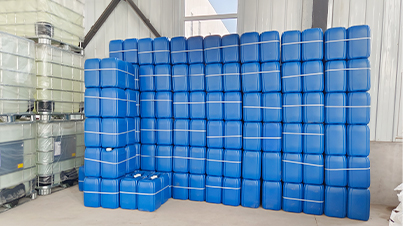water flocculation chemicals
Water Flocculation Chemicals An Overview
Water flocculation is a critical process used in water treatment to remove suspended particles and impurities from water. This process involves the aggregation of fine particles into larger clumps or flocs, which can then be easily removed through sedimentation or filtration. Flocculation is essential for ensuring the safety and clarity of drinking water, as well as for treating wastewater before it is discharged into the environment. This article provides an overview of the chemicals used in water flocculation, their mechanisms of action, and their significance in water treatment.
The Importance of Flocculation
In natural waters, various impurities, including silt, clay, organic matter, and microorganisms, can create a cloudy appearance and pose health risks. Flocculation helps to improve water quality by facilitating the removal of these contaminants. The primary objective of flocculation is to enhance the efficiency of subsequent treatment processes such as sedimentation and filtration. When particles are aggregated into larger flocs, they settle more quickly under gravity, making it easier to achieve cleaner water in a shorter time frame.
Types of Flocculation Chemicals
Several types of chemicals are commonly used in water flocculation, each serving specific functions in the treatment process
. Here are some of the most widely used flocculants1. Polyelectrolytes These are synthetic high-molecular-weight polymers that can effectively neutralize charges on suspended particles. By bridging the particles, they promote floc formation. Polyelectrolytes are categorized into anionic, cationic, and non-ionic types, depending on their charge properties. The choice of polyelectrolyte depends on the nature of the suspended particles and the treatment requirements.
2. Alum (Aluminum Sulfate) Alum is one of the most traditional and widely used coagulants in water treatment. When dissolved in water, alum hydrolyzes to form aluminum hydroxide, which acts as a flocculant by neutralizing particle charges and creating flocs that subsequently settle out of the water. Alum is effective in removing a range of contaminants, from sediments to microorganisms.
water flocculation chemicals

3. Ferric Salts Ferric chloride and ferric sulfate are also commonly used in water treatment. Similar to alum, these ferric salts form hydroxides that aid in particle aggregation. They often perform better in high turbidity waters and are less affected by pH changes compared to aluminum-based coagulants.
4. Natural Flocculants There is a growing interest in the use of natural flocculants derived from plant materials, such as mucilage from seeds and algae extracts. These organic compounds are biodegradable and non-toxic, making them an environmentally friendly alternative to synthetic chemicals. They are particularly valuable in treating water in rural or developing areas where synthetic chemicals may be too costly or unsustainable.
Mechanisms of Flocculation
Flocculation primarily occurs through two mechanisms charge neutralization and particle bridging. In charge neutralization, flocculants neutralize the electrostatic charges that keep particles dispersed in water. Once the charge is neutralized, particles can come together and form larger aggregates. The particle bridging mechanism involves the flocculant molecules linking two or more particles together, creating a larger floc.
Application in Water Treatment
Water treatment facilities often utilize a combination of flocculation chemicals to optimize the removal of impurities. The process begins with rapid mixing to distribute the flocculant evenly throughout the water. This is followed by slower mixing, allowing for the formation of larger flocs. Finally, the water undergoes sedimentation or filtration to remove the aggregated particles.
Conclusion
Water flocculation chemicals play a vital role in enhancing water quality and ensuring the safety of drinking water. By employing various coagulants and flocculants, water treatment facilities can effectively remove suspended particles, leading to clearer and safer water for consumption and discharge. As environmental concerns rise, the shift towards natural and biodegradable flocculants is likely to continue, promoting sustainable practices in water treatment and management.
-
Water Treatment with Flocculant Water TreatmentNewsJun.12,2025
-
Polymaleic AnhydrideNewsJun.12,2025
-
Polyaspartic AcidNewsJun.12,2025
-
Enhance Industrial Processes with IsothiazolinonesNewsJun.12,2025
-
Enhance Industrial Processes with PBTCA SolutionsNewsJun.12,2025
-
Dodecyldimethylbenzylammonium Chloride SolutionsNewsJun.12,2025





